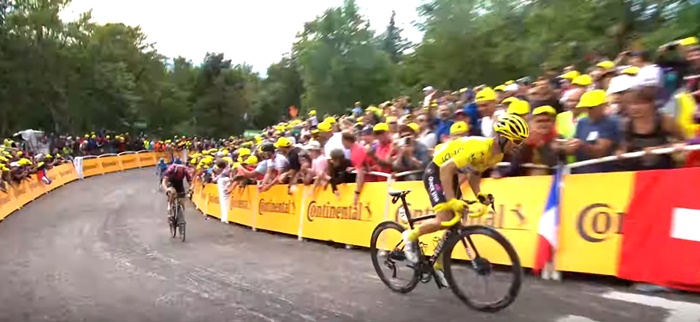
- Main contenders for the 2019 Tour de France
- A recap of stages 1-10
- A recap of stages 11-15
- A recap of stages 16-21
After the first “week” of the Tour de France, Julian Alaphilippe is in the yellow jersey.
Julian Alaphilippe is the perfect man to be leading the race at this point.
How did he do it?
There have been 10 stages so far. Five of them mattered – which is actually quite a lot for the start of the Tour when the overall contenders generally focus on staying safe and not making a colossal balls of things.
These are those five stages.
The team time trial
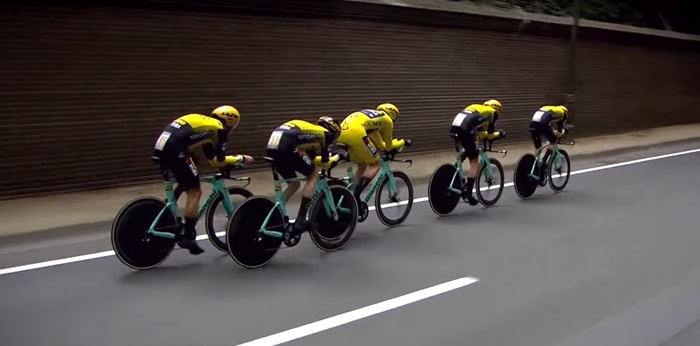
Team time trials are dull as shit to watch, but very influential. Team Jumbo-Visma won, which might be a sign that Tony Martin is back doing Tony Martin things.
‘Tony Martin things’ is actually just one thing – it’s powering along flat roads at a pace no-one else can sustain. Tony Martin can do unbelievable things using his superpower. He once raced the whole peloton on his own for an entire stage and almost won.
He’s been in the doldrums a bit the last couple of years, but at his best he can do a competitive team time trial all on his own. It’s fair to assume he contributed more than his team-mates and while all the focus was on Mike “Who?” Teunissen keeping hold of the yellow jersey after his surprise stage one victory, the chief beneficiaries were Steven Kruijswijk, who is still in contention for the overall and George Bennett, who is not (more of which later).
Of the overall contenders, Geraint Thomas and Egan Bernal lost 20 seconds and most people were not much further back than that (Alaphilippe lost 21). The exceptions were Richie Porte, Nairo Quintana, Mikel Landa, Romain Bardet and Dan Martin, who all found themselves over a minute off the race lead before they’d even seen a hill, let alone a mountain.
The Champagne hills
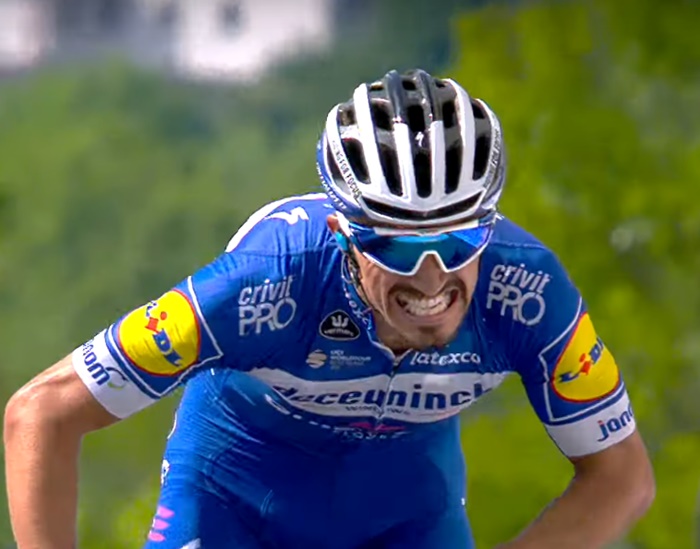
Julian Alaphilippe is the top-ranked rider this season. That’s partly because they haven’t had a Tour de France yet.
Early season is about hills, not mountains, and while he was king of the latter in the Tour last year, Alaphilippe is better suited to shorter, harder, less measured efforts.
He won Strade Bianche, he won Milan-Sanremo and he won La Fleche Wallonne. Presented with a bit of up-and-down in the Champagne region, Alaphilippe triggered a thousand tired metaphors by popping off the front of the peloton like a cork out of a bottle and fizzing to the finish.
He finished 26 seconds ahead of everyone and also picked up a 15 second time bonus for winning. This put him in the lead and 25 seconds ahead of the closest credible contender.
The summit finish
Alaphilippe is fast uphill and can match people up a mountain pass. The big question is whether he can carry on doing this for three weeks – because that’s what you need to do to win a three week race.
Stage six brought the first mountain test in the form of a bonkers finish atop La Planche des Belles Filles, which is where Chris Froome won a stage in 2012 on the day that Bradley Wiggins took the yellow jersey.
The Plank of Beautiful Girls is a tough climb anyway, but this year the organisers thought they’d tack a kilometre of gravel on the end, a good proportion of which had a gradient over 20%.
Alaphilippe coped. He coped so well, in fact, that he launched an attack and only Geraint Thomas got past him – and only just.
Then again, this was Alaphilippe immediately after crossing the line.
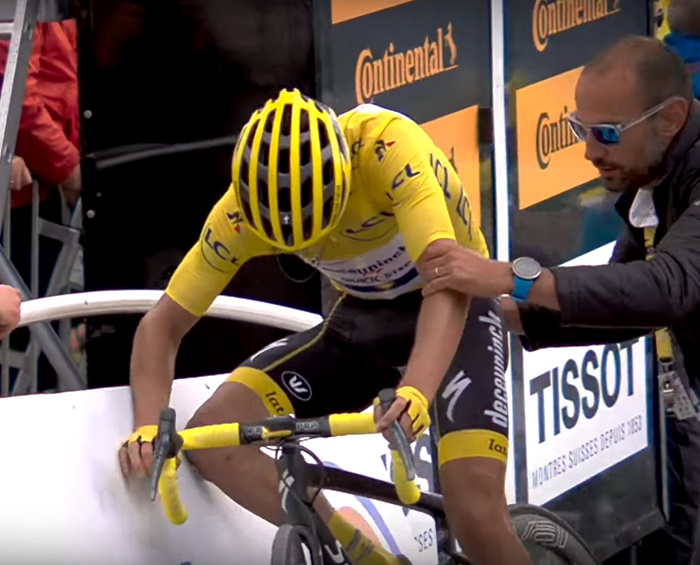
He basically rode himself to a standstill and collapsed into a barrier.
Surely this shows grit and determination, yeah? Well, contrast it with Adam Yates who arrived fourteen seconds later.
The Briton put in a fairly unremarkable performance, but when he crossed the line his first reaction was to stop his bike computer. That’s a man who’ll live to fight another day. One of the great Tour de France clichés is that a rider “shouldn’t burn all his matches” and it feels like Alaphilippe has already gone through quite a few. It’s hard to imagine him setting anything ablaze in week three.
Either way, Thomas was the quickest of the overall contenders. Using him as the benchmark, the most significant time gaps were 51 seconds to Vincenzo Nibali and 1m9s to Romain Bardet.
Nibali concluded that he was still too tired from the Giro d’Italia to race for the general classification and he’s since let himself fall to 14 minutes back.
Bardet’s shit day didn’t even end at the finish line. Literally as he was crossing it, his chain came off. Watching him stationary, his legs whirring ineffectually, it was hard not to feel for him. He had big hopes for this race and if they’re not yet up in smoke, they’re certainly smouldering. He ended the week 3m20s behind Alaphilippe and two minutes behind Thomas.
The breakaway
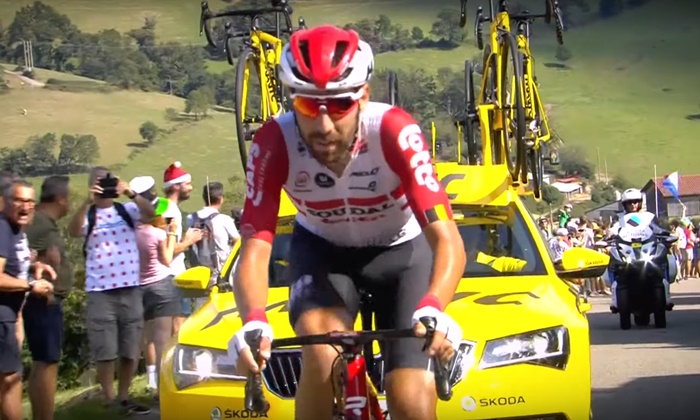
I can’t tell you who’ll win the Tour de France, but I can state with great confidence who The People’s Champion will be: Thomas De Gendt.
“I think they expect me to take on the role as patron of the breakaway, but sometimes I just say nothing and then they look at me as if to say ‘what do we do?’ ‘We ride to the finish,’ I say. ‘We cannot do anything else’.”
That’s how De Gendt explained his role to The Telegraph earlier this year. The man is unhinged. He gets in the break on about a third of the stages of every Grand Tour he’s in. It is joyous and stupid and pointless and on stage eight he actually won and it was just about the best victory we’ll get all race because Thomas De Gendt wins pretty much always are the best. (Disclaimer, if Steve Cummings wins a stage, that might actually end up being better.)
It was surely no coincidence that the Belgian ended up riding with Alessandro De Marchi for most of the day.
According to De Gendt: “There are a few guys that I really don’t like in the breakaway, but that’s because they ride at the back and watch us while we are working hard on the front. I won’t mention their names.
“Others though, riders like De Marchi, are great to have alongside you in the break. De Marchi always goes full gas from start to finish. He is so strong; he’s just one of those guys that will go full all day long unless you tell him to take it easy.”
Towards the end of the stage, De Gendt had been out in the break for 190km (plus all the other days he’d been in the break, which was most of them) when Alaphilippe and a very obviously in-form Thibaut Pinot suddenly started haring along after him. They, in turn, had the combined might of the overall contenders chasing them.
De Gent’s advantage at this point was less than a minute. He had no chance. The gap came down and down. And then it stopped coming down. And then it went up a bit. And then it went down very, very slowly and he crossed the line before anyone got to him.
Thomas De Gendt is a beast.
General classification wise, Alaphilippe and Pinot gained 20 seconds and Canadian former middle-distance runner, Michael Woods, who was a bit of a dark horse, lost 14 minutes after a crash that also resulted in someone from Team Ineos snapping their bike in half.
Echelons!
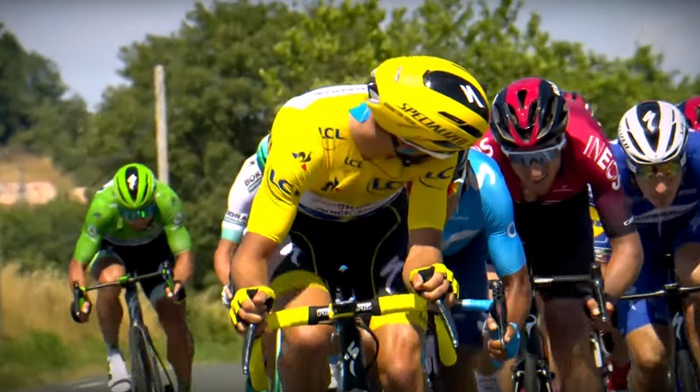
Stage 10 was supposed to be a low drama piece of piss, but then suddenly we received that most priceless of gifts: crosswinds.
Bike racing is never, ever worse for the presence of crosswinds. Here’s why they’re so important and great. You think nothing’s happening and then suddenly the peloton stretches and stretches… and snaps.
The gap starts off tantalisingly small, but when everyone’s riding flat-out, it cannot be closed. And if it’s not closed, it’ll only grow.
Alaphilippe did as much as anyone to trigger this, riding hard on the very front to force the split. It would be great to imagine his approach could triumph over the ‘energy conservation’ method across the whole three weeks, wouldn’t it?
The day’s big loser was Pinot, who lost 1m40s and dropped from third to 11th. Jakob Fuglsang, Richie Porte and Rigoberto Uran were all in the same group. It was a hefty wodge of time to lose and Mikel Landa was a little further back still.
George Bennett, who had been fourth, lost 9m41s a day after watching New Zealand lose the Cricket World Cup in the most painful way imaginable.
He missed the split in the peloton because he’d gone back to the team car to get water for what turned out to be no reason whatsoever.
“The radios were a bit sketchy and we all got our wires crossed,”
he told Stuff.co.nz. “I ended up going back to get bottles, which was really weird. I don’t really know why I was going back but I was under the impression I needed to get them, but the boys didn’t even need them. The team car was also confused.
“They said it was a good moment and we turned the corner and it was full gas with a crosswind and the race blew to pieces, and that was it.”
The current standings
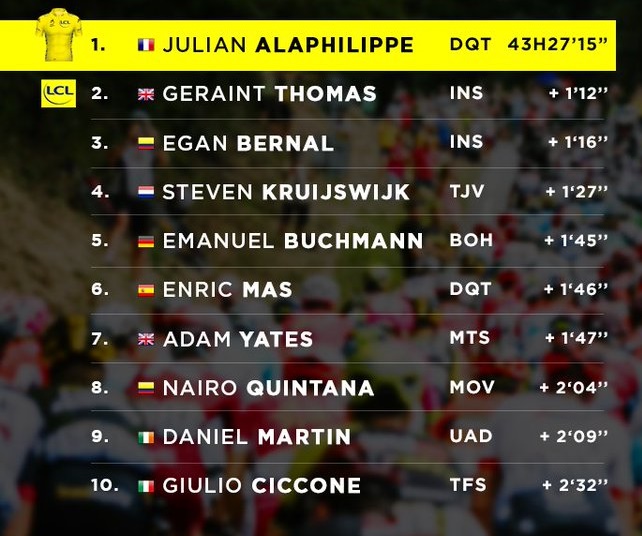
What does week two have in store?
A much shorter “week” but with much more climbing. We’re heading into the Pyrenees, people.
11. Wednesday: Flat sprint
12. Thursday. 209km with two 10km long climbs towards the end. A descent to the finish
13. Friday. 27km moderately lumpy time trial
14. Saturday. A short and brutal mountain stage. Summit finish atop the 19km Tourmalet
15. Sunday. A bit like the end of Thursday’s stage, but with a third 10km climb as a summit finish
In summary: The stages get harder and more important as the week wears on.
I’ll be back on Monday (or possibly Tuesday) with my week two recap.
You can sign up to get it emailed to you here.

Leave a Reply